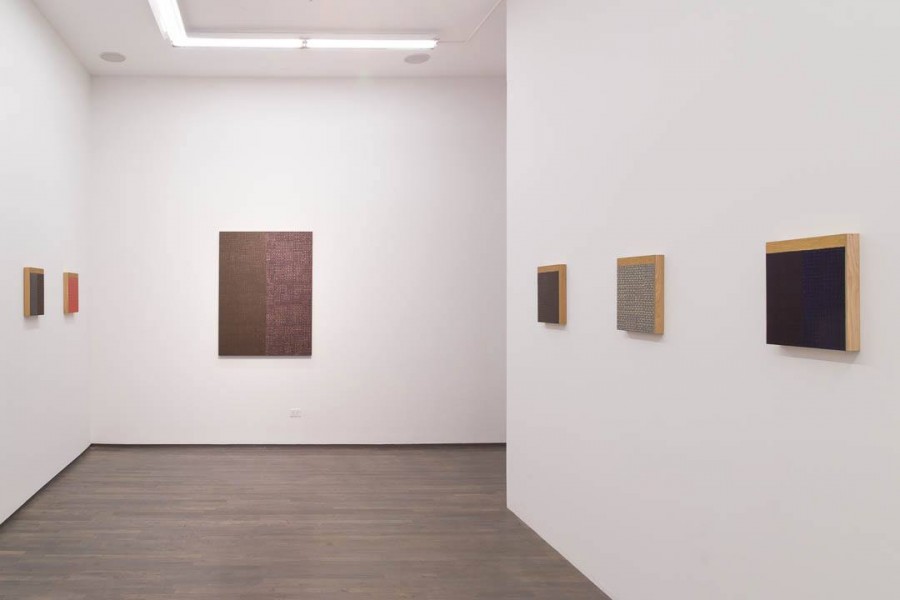McArthur Binion: “Seasons”
@ Kavi Gupta Gallery
835 W Washington Blvd, Chicago, Illinois 60607
Opening Saturday, September 17th, from 4PM - 7PM
On view through Tuesday, November 22nd
Please join us for the opening of McArthur Binion: “Seasons” on Saturday, September 17 from 4–7 pm! The exhibition will be on view at Kavi Gupta | 835 W. Washington Blvd.
Kavi Gupta is proud to present McArthur Binion’s next show at the gallery: McArthur Binion: “Seasons,” which debuts two major new series by the artist, “Seasons” and “Honey.”
To be seasoned is to be experienced—seeing the benefits of knowledge gained over times distill in one’s work. For McArthur Binion, committed to the tension of colors both art-historical and racial, the seasons and decades have infused his practice. Binion’s paintings are suffused with reference: his 1946 birth to a farming family in rural Macon, MS; their 1951 move to Detroit; New York City’s art world after his move there in 1973. Though firmly aligned with minimalist sensibilities, countryside architectures also underlay Binion’s 1970s works, as his “Circuit Landscapes” trace loose grids and planar divisions on their canvas surfaces. Exhibited in the influential Artists Space in 1973, the year of its incorporation, Binion’s paintings demonstrated his refined exploration of contemporary minimalist forms as “rural geometries.” His laborious process of forging lines with crayon involves a physicality that recalls both the agricultural and, later, factory labor of his family; through the 1980s, his grids diffused into crosshatched segments of line like overhead fields.
In “Seasons,” these stubborn crosshatches, which served to blur and distort both their weave and the photocopied numbers and names behind them (gleaned from Binion’s personal address book of 1970s New York), have given way to the grid. This form neither erases nor highlights the underlying materials—such a belated application of the high-modernist, high-minimalist icon has thickened Binion’s work.
Though one might not call his paintings pathos-laden, the personal relationships subtending Binion’s simple grids prove a sharp divergence from the majority of coeval American minimalist work. The grids, themselves a result of intensive labor, are underlaid by the emotional weight of his collected addresses. Binion thus situates himself within the troubled relationship of minimalist art to its creators. In her memoir “Feelings are Facts,” Yvonne Rainer argues that minimalist artists censored the personal in art at inverse proportions to the turbulence of their private lives. Binion sidesteps this dilemma by incorporating his personal relationships as the heart of his formalism, and foils any curious gossipers.
Over seasons Binion uses the same address, photocopied hundreds of times, such that it becomes a new background at each layering—relationships thus exist as nets and weaves behind his work. Binion employs objective production methods (photocopies and seriality) that cover highly subjective ones, a method given its sharpest articulation yet below the iconic grid.
In the gallery’s project space, Binion’s “Honey” series extends his line of inquiry. He fills his grids with images of himself as a child and photos of his mother, nicknamed Honey, recalling his older “Self Portraits.” Honey takes center stage here, as the repetitive works also evoke the sweet honeycombs of familiarity. For Binion, history is never far away.
Binion’s “Seasons” hearkens to minimalism while hinting at narrative, providing the place and time for stories to emerge. Weathering his work with measured strokes, Binion’s new paintings seem to have returned to us in their most distilled and embryonic form.
Official Website
More events on this date
Tags: Chicago, Kavi Gupta Gallery, McArthur Binion, near west side, Seasons

« previous event
next event »